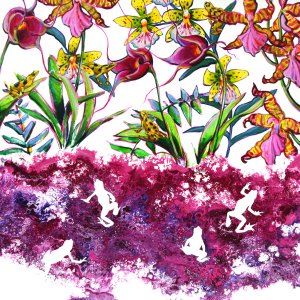Presented By: Ecology and Evolutionary Biology
EEB Seminar Series: Insights into the ecology and evolution of amphibian susceptibility to chytridiomycosis in a changing world AND a vision for the U of M Biological Station
Corinne Richards-Zawacki, University of Pittsburg, Associate Professor and PLE Director, Ecology and Evolutionary Biology

The amphibian chytrid fungus, Batrachochytrium dendrobatidis (Bd) is one of several emerging pathogens identified as key threats to wildlife. In some areas of the world the introduction of Bd to naïve host communities resulted in epidemics of the disease chytridiomycosis that caused numerous declines and extinctions. Our work in western Panama, which experienced die-offs in the mid-2000s, has focused on understanding what comes after such epidemics, testing hypotheses about the roles of host and pathogen evolution in the shift to endemic dynamics, or the persistence of host and pathogen in a shared environment. Another focus of my lab’s efforts has been on clarifying how both current (i.e., seasonal) and predicted future changes in climate shape the risk of disease related declines in North American frogs. Using a combination of field studies and experiments, we have begun to clarify the effect of temperature on host immune defenses and susceptibility to chytridiomycosis, and how the opportunity for thermally-mediated host defense varies in space and time. Using mesocosm studies, we are also investigating how climate-induced stress experienced during larval development impacts later life traits, like immune defense and thermal tolerance, that affect fitness in a broader context.
The University of Michigan Biological Station (UMBS) is a tremendous resource, with strengths in research, education and community engagement. Drawing on my experience as a field station researcher and director, I’ll conclude my seminar by outlining my vision for the future of the UMBS. Here I’ll highlight ways we can build upon the station’s existing strengths to promote more collaborative and interdisciplinary research, demonstrate excellence in place-based teaching and learning, and strengthen interactions between field station users and both the U of M and Northern Michigan communities.
Image by Ashley Cecil
The University of Michigan Biological Station (UMBS) is a tremendous resource, with strengths in research, education and community engagement. Drawing on my experience as a field station researcher and director, I’ll conclude my seminar by outlining my vision for the future of the UMBS. Here I’ll highlight ways we can build upon the station’s existing strengths to promote more collaborative and interdisciplinary research, demonstrate excellence in place-based teaching and learning, and strengthen interactions between field station users and both the U of M and Northern Michigan communities.
Image by Ashley Cecil